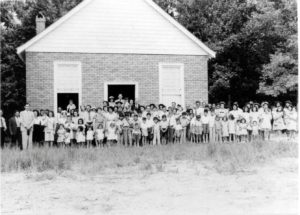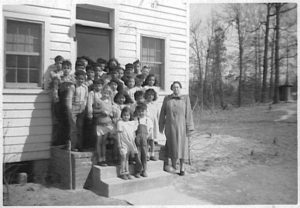About
About Us
The Upper Mattaponi Tribe is centered in King William County. The Tribe's community base still resides in the traditional lands of Tsenacomacah.
The Tribe has strong ties to Christianity and their community is centered around The Indian View Baptist Church, built in 1942. Next door to the church is the Sharon Indian School. Originally built in the early 1900’s, it was replaced with a more modern structure in the 1950’s. As the only public Indian school building in the state of Virginia, it now serves as a community space for tribal meetings and gatherings.
Today the Upper Mattaponi own over 400 acres of land and are a proud and humble people of strong character and values, with much optimism and hope for the future. The Tribe was officially recognized by the Commonwealth of Virginia on March 25, 1983, and received Federal recognition on January 29, 2018 via Public Law 115-121.
Our History
As part of the Powhatan chiefdom, Upper Mattaponi descendants played a fundamental role in the first permanent English settlement in the Americas. In 1608, Captain John Smith's "Map of Virginia" identified the village of Passaunkack at the location of the present day Upper Mattaponi. In 1676, the August Hermann Map shows several Indian houses along the Upper Mattaponi River directly at the location of the Upper Mattaponi people, identifying the region as Indian land.
Under the leadership of Cockacoeske, the Upper Mattaponi were signatories to the 1677 Treaty of Middle Plantation.
The oldest surviving King William County records dated 1885 list non-reservated Indians bearing the surname Adams living in a settlement known as Adamstown. The name most likely originated with James Adams who served as an official interpreter between the British and Indians living in this area between 1702 to 1727.
The Adamstown band became officially known as the Upper Mattaponi Tribe in 1921.

